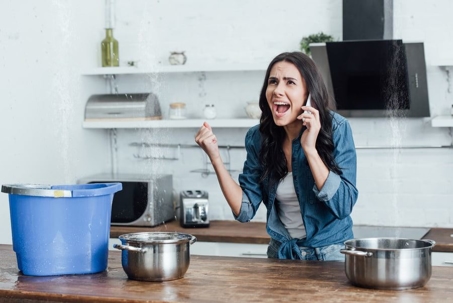If you’re like most people, your kitchen is one of the most critical rooms in your home. Not only is it where you prepare and cook your meals, but it’s also where you entertain guests and spend time with family. That’s why keeping your kitchen in good condition is essential, including taking care of any water damage.
Water damage can happen for various reasons, from leaks and spills to flooding and storms. No matter how it happens, it’s essential to act quickly to minimize the damage and get your kitchen back to normal as soon as possible.
Here are a few things to expect before calling professionals to renovate your kitchen after water damage:
1. Assess the Damage
The first step is to look at the damage’s extent. You must call a professional to help with the repairs if you have significant water damage.
- Check for water damage to the floors: Water can damage flooring; if the damage is severe, you may need to replace the flooring entirely.
- Inspect the walls for water damage: Drywall is susceptible to water damage; if the damage is severe, you may need to replace the affected panels.
- Check the ceiling for water damage: Ceiling tiles are also vulnerable to structural damage; if the damage is severe, you may need to replace the affected tiles.
- Check the appliances for water damage: You may need to replace the affected devices to avoid short circuits.
2. Remove Wet Items
Once you’ve assessed the damage, remove any wet items from the affected area. That includes things like wet flooring, wet cabinets, and wet countertops. If possible, try to salvage any items that can be salvaged.
3. Dry Out the Area
Once you’ve removed all the wet items, it’s time to start drying out the area. You can use fans, dehumidifiers, and air conditioners for this. The goal is to get the area as dry as possible to prevent mold and mildew from growing.
4. Clean the Area
Once the area is dry, you can begin the cleaning. That includes disinfecting all surfaces to prevent the spread of bacteria and viruses.
5. Make Repairs
Once the area is clean and dry, you can start making repairs—it’s always best to call professionals to ensure the job is done right. It may include replacing damaged flooring, cabinets, and countertops.
6. Prevention
The best way to deal with water damage is to prevent it from happening in the first place. Some simple prevention tips include fixing any leaks immediately, drying up spills as soon as they happen, and keeping the area well-ventilated.
By following these tips, you can help minimize the damage caused by water and get your kitchen back to normal as soon as possible.
Conclusion
It is essential to renovate your kitchen quickly after water damage. Water damage can lead to mold and mildew, which can be very dangerous to your health. It can also cause your kitchen to become structurally unsound. So, if you experience any water damage in your kitchen, call a professional immediately to fix the problem. Quickly fixing these problems can help prevent further damage and keep your kitchen looking its best.
If you find yourself in need of flood damage cleanup or kitchen renovation, we can help. DryZone is a complete renovation solution for homes damaged by water or fire. We can take care of everything from the initial design and planning stages to completing your remodeled kitchen or bathroom.


